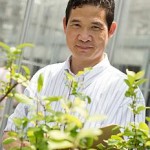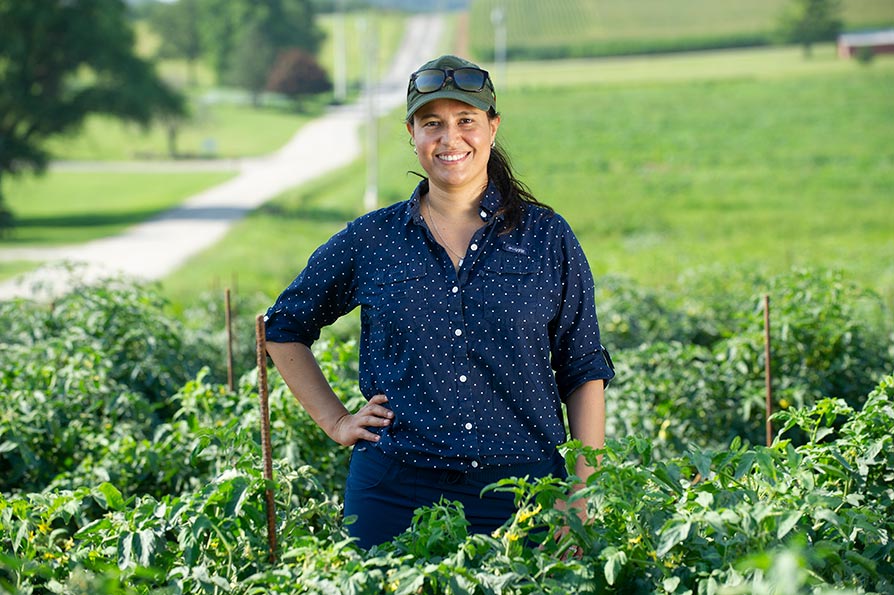Is Whole Orchard Recycling a Good Fit for Apple Growing?

Whole orchard recycling incorporates all tree biomass into the soil during orchard turnover by grinding trees into wood chips.
Photo by Brent Holtz
On Sept. 14, 2022, Agriculture Secretary Tom Vilsack announced that USDA would invest more than $3 billion in the Partnerships for Climate-Smart Commodities to encourage nationwide adoption of climate-smart agriculture and forestry practices and promote markets for climate-smart commodities.
USDA defines a climate-smart commodity as “an agricultural commodity that is produced using farming practices that reduce greenhouse gas emissions or sequester carbon.”
Given the large funding allocation, the investment represents an historic action USDA has taken in response to climate change. It could be viewed an important step toward the carbon-neutral goal in all agricultural sectors in the U.S., including the tree fruit industry.
According to the secretary’s announcement, 70 partnerships were selected for funding support, and additional partnerships were selected and announced in late 2022.
One of the 70 partnerships is Blue Diamond Growers, an almond grower cooperative representing 3000 growers in California. Blue Diamond Growers will receive $45 million to support its ongoing effort of adopting climate-smart practices, such as cover crops and whole orchard recycling (WOR).
WOR IN ALMOND
What is whole orchard recycling, and why is it being adopted in almond production in California? Whole orchard recycling refers to an on-site incorporation of all tree biomass into soil during orchard turnover by grinding trees into wood chips.
Although biomass recycling has long been documented in other crops, WOR has not been practiced on a meaningful scale until lately in California almond orchards.
The major reasons for WOR adoption appear to include the following:
• An increase in orchard turnovers due to rising almond prices and more frequent drought seasons.
• No longer sustainable for open burning of removed trees due to releasing of a large quantity of greenhouse gas and other pollutants into the air.
• State regulations of phasing-out and eventually banning open agricultural burning by 2025.
WOR requires heavy equipment. Consequently, it is a more complex and more costly practice than open burning during orchard turnover.
On average, WOR costs $800 more per acre than open burning. To reduce the burden on growers, financial incentives from government and industry are made available to help grower transition from open burning to WOR.
What are the long-term effects of WOR adoption on almond orchards? Based on studies conducted by Jahanzad et al. (2020, 2022) in an almond orchard 9-10 years after WOR and burning treatments and replanting, WOR showed remarkable beneficial effects on soil properties, tree growth, and productivity when compared to burning.
One beneficial effect is that WOR improved soil structure and health, including reduction in soil compaction and nitrate leaching, and increase in soil water holding, soil aggregation, soil nutrients (carbon, nitrogen, and organic matter), and positive soil biological activities.
The second is WOR increased the readings of parameters related to tree growth and productivity, including crop yield (by 15%), tree nitrogen contents, trunk diameter, water status, water use efficiency (by 20%), and resistance to deficit (by 20%) irrigation.
The third is WOR sequestered a significant amount of carbon (2 tons per acre) in soil, providing substantial mitigation potential for achieving carbon neutral or negative almond production.
WOR IN APPLE
Orchard turnover or renewal is also common and necessary for other tree fruits due to tree age associated productivity decline and availability of new and superior cultivars. In apple, it’s been recommended that growers replace 5% of their orchard plantings each year to maximize profitability.
During land preparation for apple orchard renewal, permits allow trees to be burned in many parts of the country. Given the worsening crisis in climate change, open burning of old apple trees may face similar regulatory restrictions as almond tree burning experienced in California.
It seems time for the apple industry to consider if and how the WOR practice could be implemented as an alternative to open burning.
Could WOR be adopted for apple production? To answer this question, targeted studies are needed. It is expected that the costs associated with WOR adoption in apple would be comparable to those in almond. However, the short- and long-time effects of WOR on renewed apple orchards may vary considerably due to the differences in environment.
Apple replant disease, which is particularly common in renewed orchards, could potentially be a major hurdle for adoption of WOR in apple, although almond replant disease has not been shown to be a major limitation to date.










